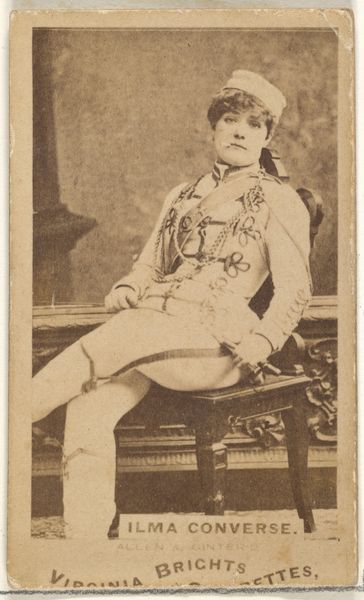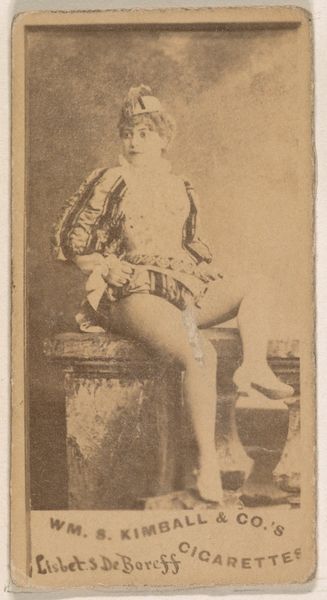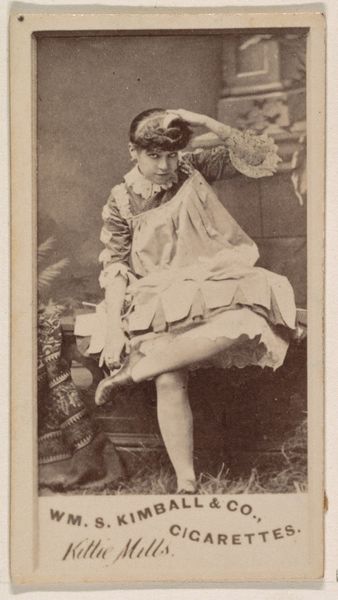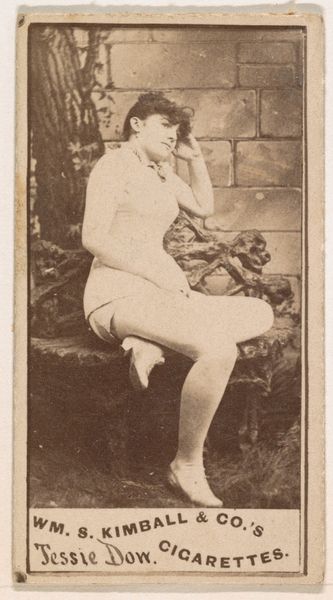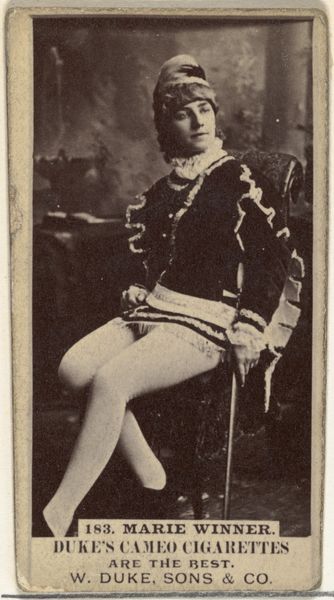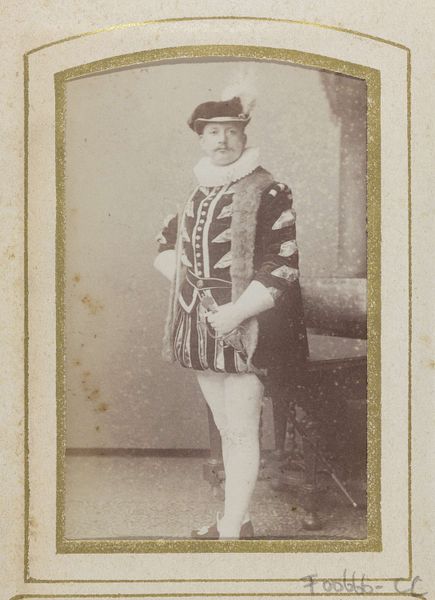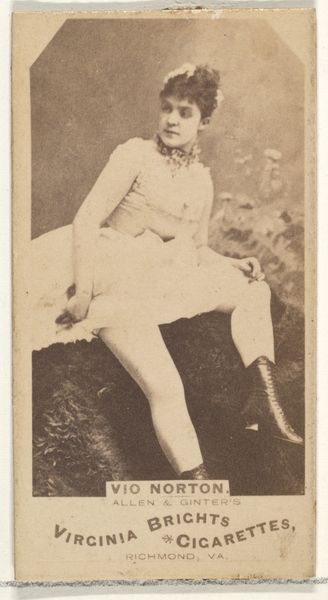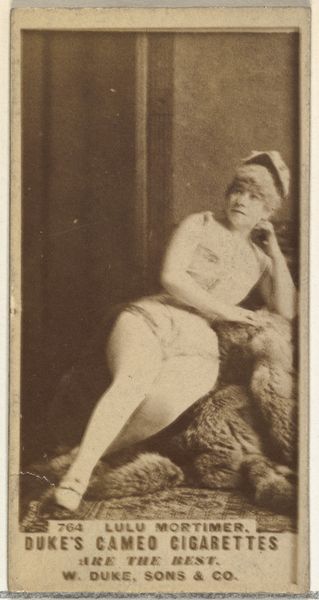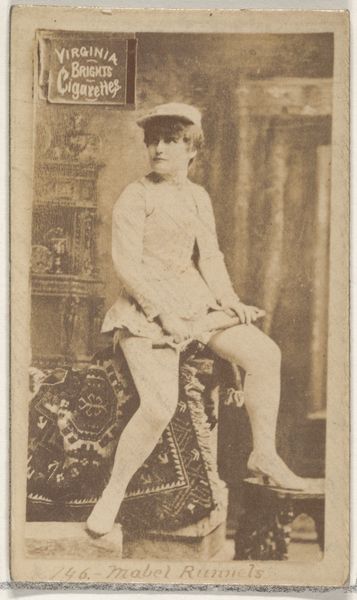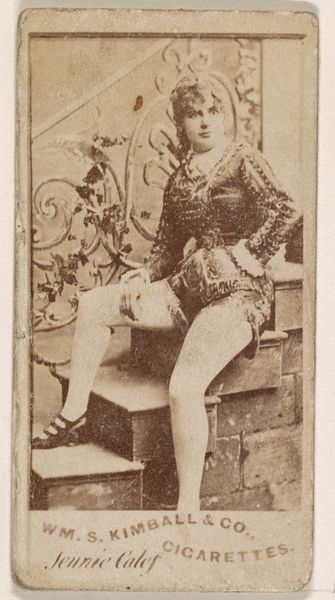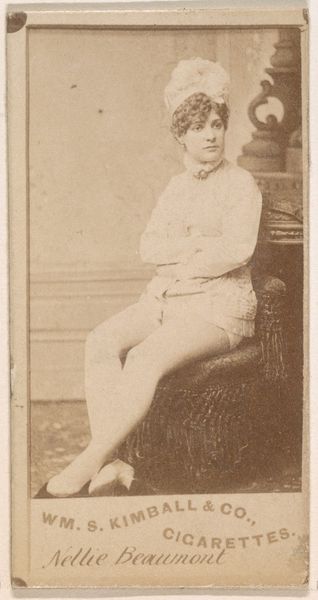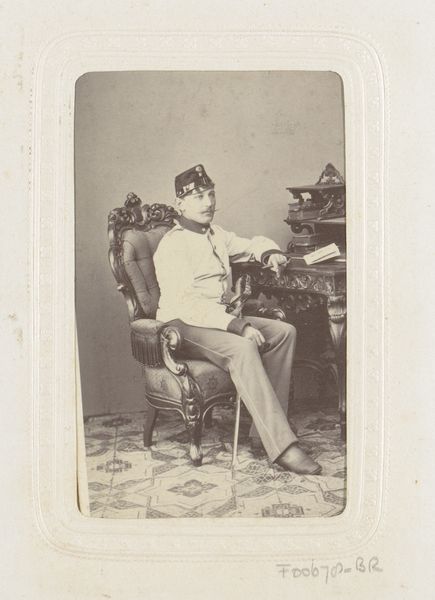
Portret van een man in kostuum zittend aan een tafel met boeken, aangeduid als J. Wiarda 1860 - 1905
0:00
0:00
photography
#
portrait
#
aged paper
#
toned paper
#
photography
#
19th century
#
genre-painting
#
history-painting
Dimensions: height 83 mm, width 52 mm
Copyright: Rijks Museum: Open Domain
Curator: Here we have an intriguing 19th-century photograph titled "Portret van een man in kostuum zittend aan een tafel met boeken, aangeduid als J. Wiarda," attributed to Jan Goedeljee, created sometime between 1860 and 1905. Editor: My first impression is of its intimate scale and somewhat theatrical feel. The sepia tone and aged paper certainly enhance that sense of historical distance. Curator: Exactly! Considering the rise of photography during this era, the staging is quite deliberate. The subject is presented in a period costume, surrounded by props such as books and what appears to be a column, all carefully arranged to create a sense of cultivated intellect. We must question how it reflects ideals of masculinity, knowledge, and even social standing. Editor: Absolutely. And thinking about the material production, photography like this, particularly in creating this stylized presentation of a "genre painting", made accessing historical or literary roles attainable. What choices went into creating this costume? The paper, with its golden decorative edge? How might it be consumed and displayed? Curator: I think it's fascinating to consider it alongside feminist theory and queer studies, specifically in relation to cross-dressing, and the blurred gender performance implied. The very act of donning attire and adopting this pose allowed individuals to temporarily inhabit different personas and disrupt conventions. Was it a tool of social subversion or merely performative appropriation? Editor: Indeed. If we look closer, this image, crafted using photography on toned paper, demonstrates a democratization of the elite portrait. Consider also that it makes the trappings of wealth and education, formerly secured through expensive painted portraits, accessible to more than just the bourgeoisie. We might ask how it shifts the relationship of viewer and subject. Curator: It is an exciting intersection of technological advancements and evolving socio-political contexts! It shows how visual media like photography actively shaped identities during that era, whether as tools for challenging prevailing power dynamics, or preserving it, offering viewers ways to renegotiate rigid gender and social expectations through acts of personal, embodied performance. Editor: I find that delving into how accessible photography reshaped self-image provides rich ways for interrogating production processes. Thinking about Goedeljee, the photographer, brings into focus questions of his labor and artistry alongside how his clients chose to represent themselves through images. Curator: I agree! It provides compelling possibilities to explore and further expand into social and cultural analyses. Editor: For sure! It also emphasizes our need to remember materiality itself tells a story, deeply impacted by its time of production and circulation.
Comments
No comments
Be the first to comment and join the conversation on the ultimate creative platform.
